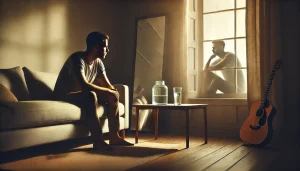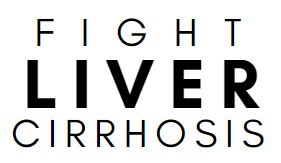“For years, I told myself I was fine. I knew the risks, I saw the signs, and still, I kept going. The funny thing is, I wasn’t oblivious. I wasn’t clueless. I was just convinced I had time—time to slow down, time to fix things, time to undo the damage before it became real. But here’s what I’ve learned: you don’t have to wait for a crisis to make a change.”
1. The Invisible Line

It’s not about when the damage starts. It’s about when you choose to stop ignoring it.
- How Much Is Too Much?
“Let’s be honest: no one ever tells you where the line is. Society doesn’t draw it for you, friends don’t point it out, and even your own body whispers instead of shouts. So I kept going, thinking I was fine because nothing felt catastrophically wrong—yet.” - The Problem With “Normal”:
“Drinking felt normal. A few drinks with friends, a few more alone. A busy life, a stressful day, a reason to unwind. Isn’t that what everyone does? I told myself it was fine because I wasn’t the only one doing it. And besides, wasn’t a fatty liver just part of the deal for anyone who drank regularly?”
2. Justifying the Signs
- The Numbers on the Reports:
“Every year, my health reports came back with slightly elevated results: GGTP, ALP, AST:ALT ratios. I glanced at them, nodded at the doctor’s advice to ‘cut back,’ and moved on. They were just numbers, not warnings—or at least that’s what I told myself.” - The Excuses I Clung To:
“It wasn’t like I was collapsing or missing work. Sure, there were days when my energy wasn’t what it used to be, mornings when I felt heavier than usual, and hospital visits I explained away. But none of it felt urgent. None of it felt like a reason to stop.”
3. The Damage I Didn’t Feel
- The Quiet Cost:
“The thing about alcohol is that the damage is silent. It doesn’t come with alarms or flashing lights. It builds slowly, hiding behind routines, justifications, and my ability to function. And by the time I felt it, it had already been happening for years.” - When I Started Listening:
“It wasn’t one moment that made me stop—it was the weight of all the moments I ignored. It was realizing that the line I thought was far away had been right in front of me the whole time.”
4. Reflecting on the Journey
- What I’ve Learned:
“If I could go back, I’d tell myself that health isn’t just about feeling fine—it’s about listening when your body starts whispering, not when it starts shouting. The signs were always there. It’s just a matter of whether I was ready to see them.”
5. Addressing the Reader
- Speaking to You:
“If you’re reading this and thinking, ‘I know what I’m doing,’ I want you to ask yourself this: do you know when it’s too much? Do you know where the line is? Or are you waiting for someone to draw it for you? Because the truth is, no one will. You have to draw it yourself.”
Closing Thought
“I knew what I was doing for all those years. But knowing isn’t the same as acting. It’s not enough to see the signs—I have to listen to them. I have to decide when enough is enough, because no one else will decide for me.”




0 Comments